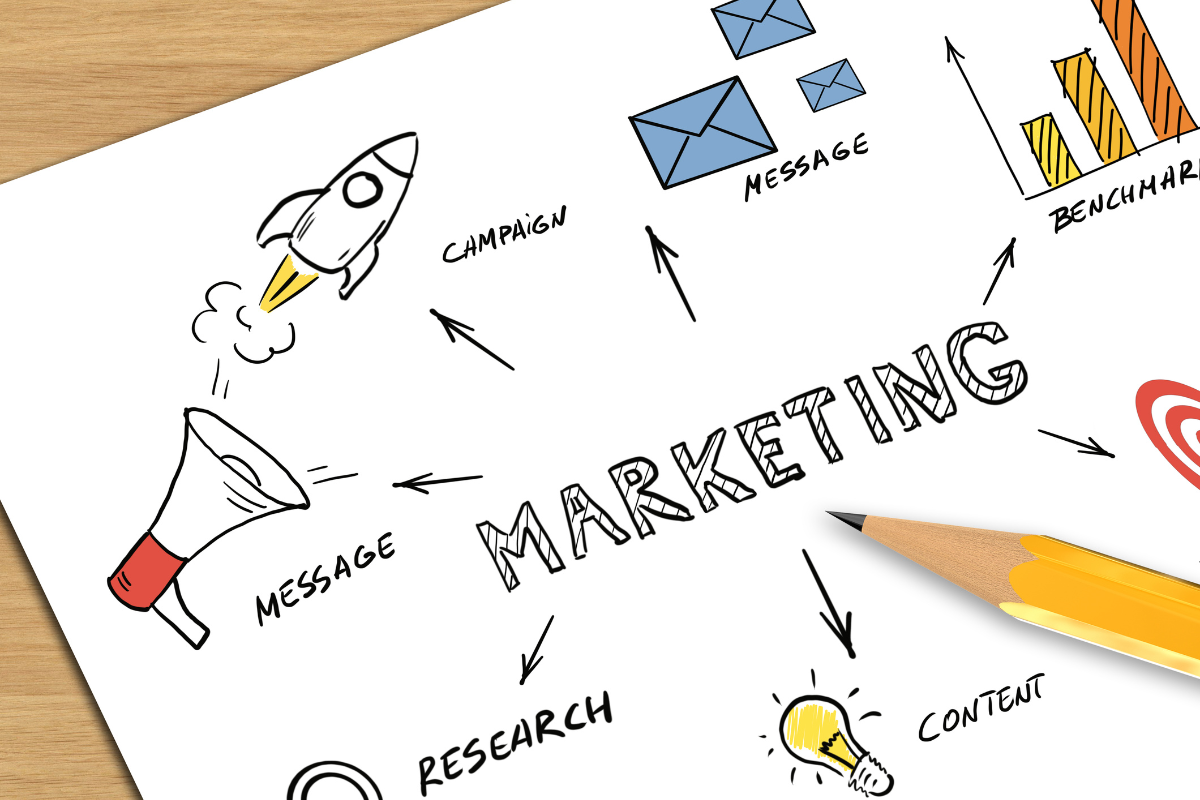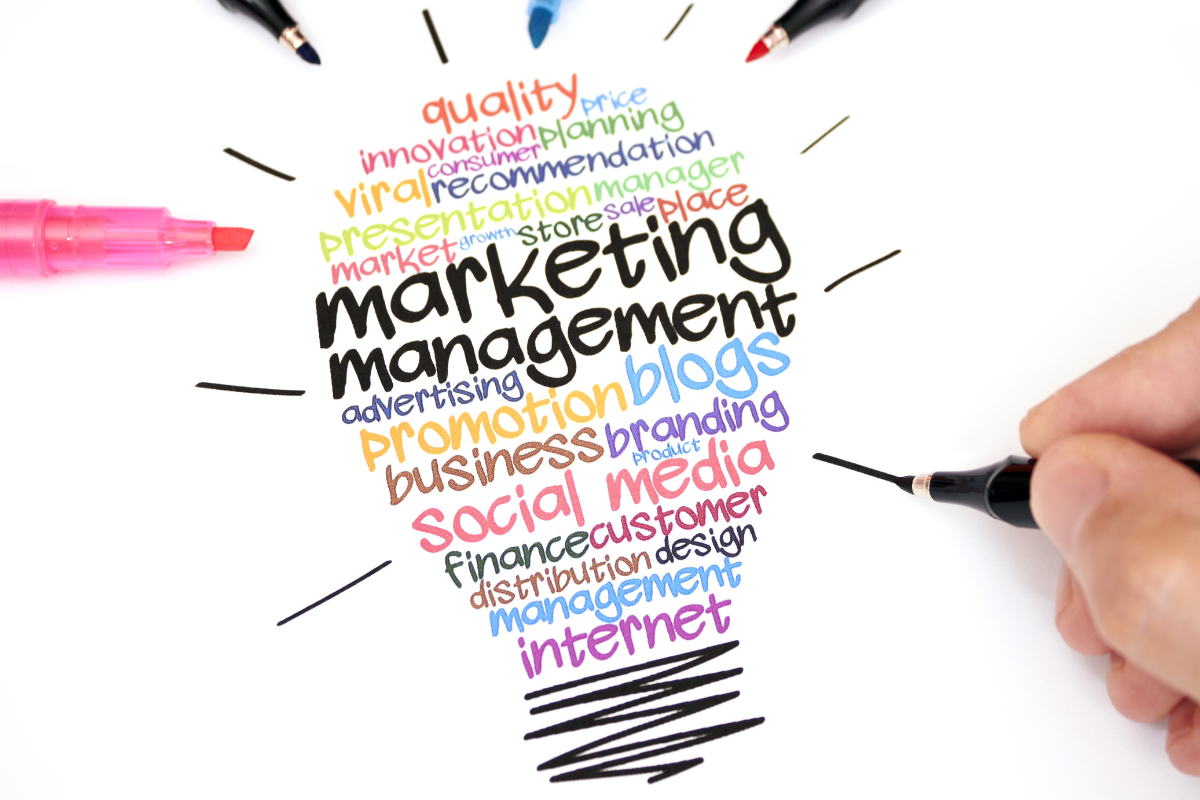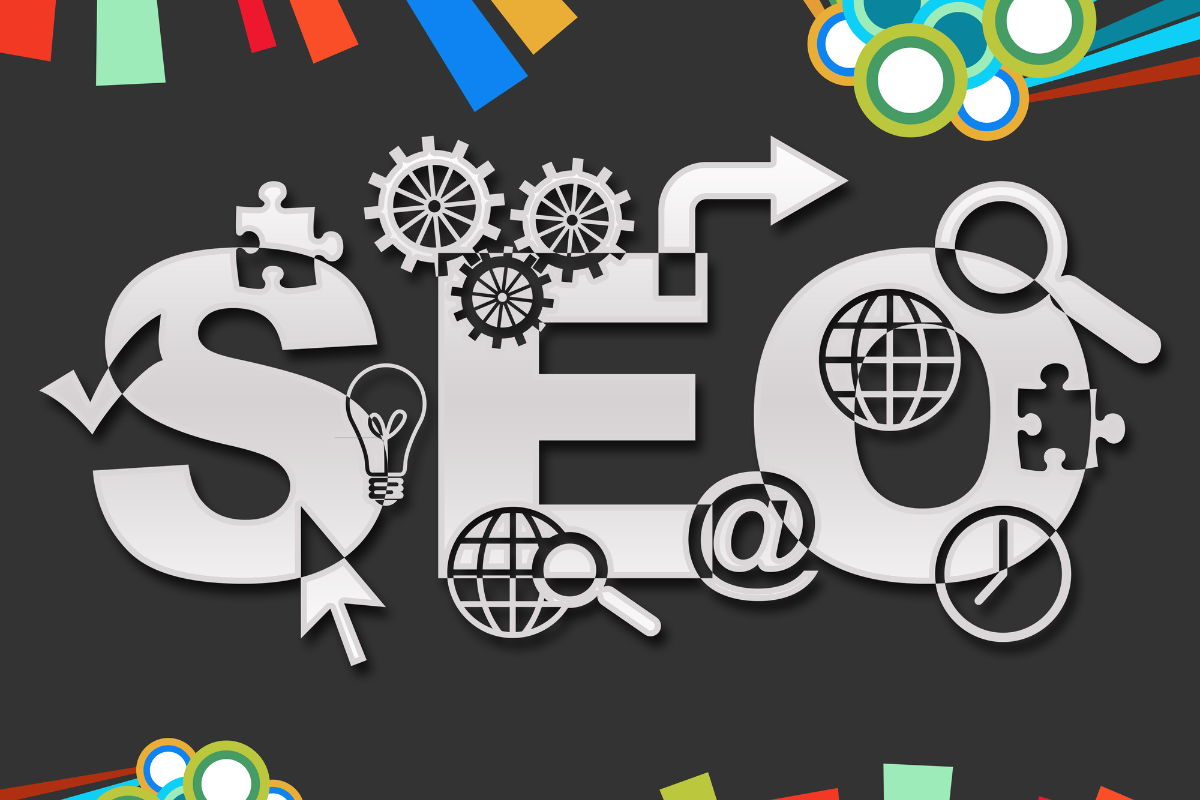
Post Title
Why Marketing with Mobile is Crucial for Small Businesses and Startups in 2025
January 2, 2025
The world is at our fingertips literally. With smartphones being an indispensable part of our daily lives, mobile marketing has become essential for businesses seeking to grow and connect with their audience. For small businesses and startups, this is more than just a digital shift; it’s a strategy that levels the playing field, enabling them to compete with larger enterprises. In fact, it’s not just about being visible on mobile devices; it’s about meeting consumers where they are and providing them with the best possible experience, whether they’re searching for your business on their phones, browsing through your website, or using a mobile app.
If you’re not yet tapping into mobile marketing, you could be missing out on a massive opportunity to grow your business and build long-term relationships with customers. This post will dive into everything you need to know about mobile marketing in 2025, from current trends to actionable strategies and real-world case studies, so you can leverage this marketing channel to your advantage.
The Landscape of Marketing with Mobile: Trends and Statistics

Understanding the mobile marketing landscape is key to recognizing how crucial it is for your business. Mobile marketing isn’t just a trend, it’s an ongoing evolution that businesses must embrace to stay competitive.
Global Mobile Usage
The statistics are staggering. According to recent data, there are over 6.5 billion smartphone users globally, and mobile devices account for nearly 70% of all internet traffic. In the U.S. alone, over 90% of adults have a smartphone, and more than 70% of those people access the internet daily via their phones. The increasing reliance on mobile devices means that small businesses need to adjust their marketing strategies to cater to this growing mobile-first audience.
As mobile usage grows, so does the volume of mobile transactions. In 2025, it’s expected that mobile commerce (m-commerce) will account for nearly 75% of all eCommerce sales worldwide, which emphasizes the importance of making your business mobile-friendly. If your website isn’t optimized for mobile, you risk losing access to a significant portion of your audience.
Mobile Advertising Boom
Mobile advertising is booming and shows no signs of slowing down. It’s predicted that mobile advertising will surpass $400 billion in 2025. A major contributor to this growth is social media platforms like Facebook, Instagram, TikTok, and YouTube, where small businesses can run targeted ads based on users’ location, interests, and behavior. This makes mobile advertising an incredibly effective tool for reaching potential customers.
The shift toward mobile-first advertising means that small businesses can no longer afford to ignore this platform. If you’re looking to expand your reach, drive more traffic, and increase conversions, mobile advertising is a cost-effective channel that can deliver powerful results. Businesses must be agile and creative with their ad formats, utilizing stories, interactive elements, and video ads to capture consumers' attention.
Consumer Behavior and Mobile Shopping
More than 79% of smartphone users in the U.S. have made a purchase online using their mobile device, and this number is growing rapidly. A substantial 58% of consumers research products on their phones before making a purchase decision. This highlights the fact that mobile is not only the first point of contact for many customers but also where the final buying decision is often made.
For small businesses, this presents a golden opportunity to target consumers at the moment of need. If your website or digital presence isn’t optimized for mobile, you risk losing potential customers who may abandon their cart or leave your website due to a poor mobile experience.
The influence of mobile on shopping behavior extends beyond e-commerce. Consumers also use their smartphones to browse for local services, make restaurant reservations, and compare prices. In fact, 76% of people who search for something nearby visit a business within a day. For small businesses with brick-and-mortar stores, this is a massive opportunity to attract in-person visits.
Mobile Marketing Strategies for Small Businesses and Startups

Now that we’ve discussed why mobile marketing is critical for small businesses, let’s dive into the actual strategies that can help you leverage mobile marketing effectively. From optimizing your website to launching SMS campaigns, these strategies can boost engagement, increase conversions, and drive long-term growth for your startup.
Creating a Mobile-Friendly Website
The first and most fundamental step in mobile marketing is making sure your website is mobile-friendly. Over half of all web traffic now comes from mobile devices, and Google ranks mobile-friendly websites higher in search results. If your site isn’t optimized for mobile, you risk losing both customers and search engine visibility.
Action Steps:
- Responsive Design: Ensure that your website adapts to various screen sizes and loads quickly on mobile devices. Google’s mobile-first indexing means that the mobile version of your site is considered the primary version for ranking purposes.
- Simplified Navigation: Keep your website navigation simple and intuitive so users can easily find what they’re looking for without frustration.
- Fast Loading Speed: Mobile users expect quick access to information, so make sure your website loads in under three seconds to avoid high bounce rates.
- Mobile-Optimized Forms: Make it easy for visitors to take action by simplifying forms and using large, easy-to-tap buttons.
By making a mobile-friendly website, you provide a better user experience that leads to higher engagement and conversion rates.
Utilizing Mobile Apps
For small businesses with a loyal customer base, a mobile app can be an incredibly powerful marketing tool. Mobile apps offer a more direct way to engage with your customers, and they allow you to provide personalized experiences, offer exclusive deals, and send push notifications.
Action Steps:
- App Design: Build an app that provides real value to your customers. Whether it’s an eCommerce app, loyalty program, or a content-driven app, make sure your app serves a purpose.
- Push Notifications: Use push notifications to alert customers to flash sales, new products, or events. Personalize your messages based on user behavior to make them more relevant.
- App Integration with Social Media: Integrate your app with your social media channels so customers can share content, earn rewards, and feel connected to your brand.
An app can enhance customer loyalty, drive repeat purchases, and ultimately increase your business’s revenue.
SMS and MMS Campaigns
SMS and MMS campaigns are an effective way to reach customers directly on their mobile phones. SMS messages boast a 98% open rate, making them one of the most effective communication channels. Whether you're sending promotions, product updates, or reminders, SMS is a great way to keep customers engaged and informed.
Action Steps:
- Segmentation: Segment your audience based on factors like purchase history, location, and preferences to ensure your messages are relevant.
- Timing: Don’t overwhelm your customers with too many messages. Find the optimal frequency to maintain interest without becoming intrusive.
- Personalization: Personalize your messages to make them feel more human and less like generic marketing blasts.
MMS takes it one step further by allowing you to send images, videos, and other multimedia content, making your messages more engaging and interactive.
Mobile Advertising
Mobile advertising is a powerful way to increase brand awareness, drive traffic to your site, and generate leads. Platforms like Google Ads, Facebook, Instagram, and TikTok allow small businesses to run highly targeted campaigns based on location, demographics, and user behavior.
Action Steps:
- Targeting: Take full advantage of advanced targeting options to reach the right audience. Geo-targeting can be especially useful for businesses with physical stores.
- A/B Testing: Test different types of ads (banner, video, carousel) to see which performs best.
- Retargeting: Use retargeting ads to re-engage users who have visited your site but didn’t convert. This is a great way to bring back potential customers.
Effective mobile ads can drive traffic to your website, increase leads, and build brand awareness.
Location-Based Marketing
Location-based marketing allows businesses to target customers based on their physical location using technologies like GPS and geofencing. This strategy is particularly effective for businesses with physical locations or those running time-sensitive promotions.
Action Steps:
- Geo-Fencing: Create virtual boundaries around your store or events and send push notifications or SMS messages to users as they enter the area.
- Google Business Profile: Optimize your Google Business Profile listing so customers can easily find your business, read reviews, and get directions.
- Location-Specific Promotions: Offer exclusive deals or promotions for customers who are in proximity to your store or event.
Location-based marketing creates a sense of urgency and relevance, driving foot traffic and boosting sales.
5 Mobile Marketing Ideas for Effective Campaigns

Coming up with fresh and innovative ideas is key to keeping your mobile marketing campaigns engaging. Here are a few creative ideas that can help take your mobile marketing to the next level:
- Loyalty Programs: Reward repeat customers with loyalty points or exclusive discounts through a mobile app or SMS campaign.
- Interactive Contests: Run a mobile-friendly contest or giveaway that encourages users to engage with your brand.
- In-App Purchases: If you have an app, allow users to make purchases directly through it. Offering a seamless shopping experience will increase conversions.
- Push Notifications with Urgency: Send out limited-time offers via push notifications to create a sense of urgency and encourage immediate purchases.
- Mobile-First Content Marketing: Create content specifically designed for mobile consumption, such as short-form videos, micro-blogs, or interactive stories.
By incorporating creative elements into your mobile marketing strategy, you can keep your audience engaged and improve your chances of turning casual visitors into loyal customers.
Advantages and Disadvantages of Mobile Marketing
As with any marketing strategy, mobile marketing comes with its own set of advantages and challenges. Let’s break them down:
Advantages:
- Wider Reach: With billions of people using smartphones, mobile marketing offers access to an expansive audience.
- Real-Time Engagement: Mobile marketing enables you to engage with customers instantly, whether through SMS, push notifications, or social media apps.
- Personalization: Mobile marketing allows for highly personalized campaigns, which can significantly improve customer loyalty and conversion rates.
- Cost-Effective: Compared to traditional forms of advertising, mobile marketing is often much more affordable for small businesses.
Disadvantages:
- Saturation: Since mobile marketing is so widely used, standing out among the noise can be difficult.
- Overuse of Data: Some mobile marketing strategies, like SMS and push notifications, can be considered intrusive if overused or poorly timed.
- Technical Challenges: Creating a seamless mobile experience requires careful attention to design and optimization, which may require additional resources.
Case Studies: Successful Mobile Marketing Campaigns by Small Businesses and Startups
Now that we've discussed strategies, let’s take a look at a few real-life examples of small businesses that have successfully implemented mobile marketing campaigns.
- A Local Coffee Shop: SMS Loyalty Program A local coffee shop used SMS marketing to send out discounts and loyalty rewards to its regular customers. By offering personalized discounts based on purchase history, they increased foot traffic by 30%.
- Fashion Startup: Instagram Shopping Ads A fashion startup utilized Instagram’s shoppable posts to allow customers to purchase items directly through their mobile device. This led to a 40% increase in online sales within the first two months.
- A Fitness Center: Push Notifications A local fitness center used push notifications to remind customers of class schedules, offer limited-time promotions, and provide fitness tips. This led to a 20% increase in membership renewals.
These case studies show how small businesses can use mobile marketing to drive engagement and boost sales.
Embrace the Future of Mobile Marketing with Visio SEO!

Mobile marketing in 2025 and beyond is no longer optional for small businesses and startups—it’s a necessity. The key to success lies in understanding mobile user behavior, optimizing your website for mobile devices, and engaging your audience through SMS, apps, and location-based strategies. With mobile commerce on the rise, businesses that fail to embrace mobile marketing may be left behind.
At Visio SEO, we specialize in helping small businesses and startups leverage the power of mobile marketing. Whether you need a mobile-friendly website, a custom app, or help with SMS campaigns, our team of experts can guide you through every step of the process.
Ready to take your mobile marketing strategy to the next level?
Contact Visio SEO today and let’s get started!
Contact Us
Contact Us
We will get back to you as soon as possible
Please try again later
Subscribe to Our Newsletter
Stay up to date with our latest offers and promotions by signing up now!
Contact Us
We will get back to you as soon as possible.
Please try again later.

We are the premier digital marketing solution in Elgin. Contact us today to get your free, no-obligation consultation!










